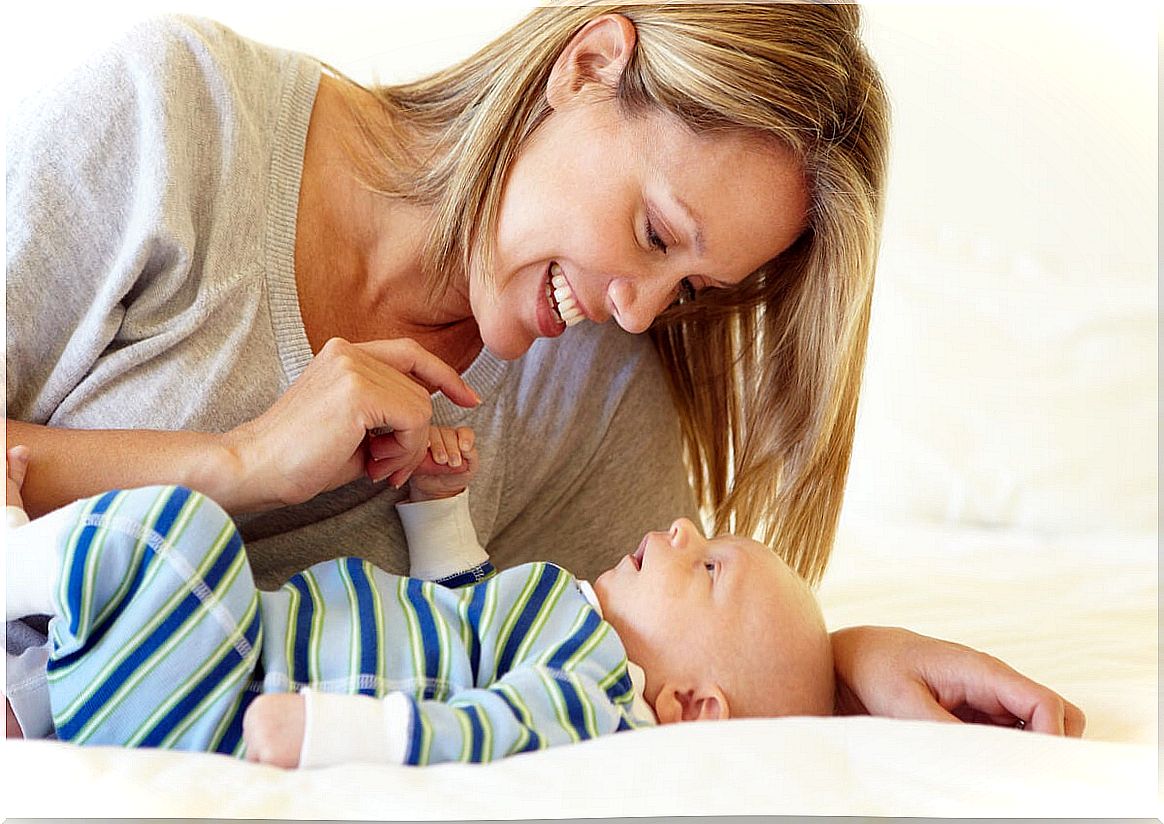Maternity Or Child-directed Speech: Why Is It So Important?

Maternity is that particular way of speaking that many mothers or adults use with babies and young children. Things are said half-tongue and with a pampering tone, while the child carefully follows the course of those words and often responds to them with smiles, surprise or interest.
It was even said that talking to the baby in this way was not correct because it hindered language development. Today we know that the exact opposite happens: the maternity unit helps the child to develop his language skills and is great for him to learn to communicate.
In the maternity, there are not only the simple, and sometimes absurd, words that are said to the baby. There is also a special intonation and a lot of mimicry. It expresses affection and a desire to establish communication with the child and for that reason it is much more than a cuddly way of speaking.

What is the maternity?
Although maternés is a generic word used to designate that language of the mother with the baby, there are also those who speak of paternés to refer to the part that corresponds to the father. However, this name fits all communication with the child that responds to these patterns and is used by the caregiver.
It is a dialect in which there is a very defined pronunciation and vocalization. The voice is sharpened and the words are separated in a marked way, using short and repetitive phrases. The usual thing is that it is spoken only in the present tense.
The most common thing is that in the maternés the words are simplified, or they become onomatopoeias. For example, you don’t say “tetero”, but “tete”; and they do not speak of a cat, but of the “meow meow”. The phrases are full of diminutives and accompanied by gestures and facial expressions.
Physical contact is also common when speaking in this manner. The baby is caressed or given a kiss, for example. The adult who speaks expects a response from the child and this usually gives it through a kick, a purr, the look or an attempt to repeat what he hears.
Why is maternity wear important?
Many adults use maternity with children, spontaneously and without thinking about why they do it or what sense this form of communication makes. For the baby it does make a lot of sense actually. In the first measure, because the intonation and the gestures that accompany it are highly affective and that is how the little one understands it. He perceives that there is a positive attitude towards him.
Likewise, this way of speaking to the child does not propose a monologue, but an interaction. He captures it and that is why he responds, in his own way, thereby establishing an affective and communicative bond with the person who speaks to him.
The exaggerated marking of the words also catches your attention. The special intonation fulfills a role similar to that of singing: it helps the words and phrases used to be more fixed in memory, thereby contributing to the development of learning and speech.
Those short and repeated phrases, together with that kind of affectionate parody that the adult makes, lead little by little the little one to understand what they want to say to him. It does not represent a teaching and learning process as such, but it does prepare the ground for it to occur.

More than speech, conversation
Remember that human language is not like the language of a machine. It is not just about encoding an idea into words so that the other can decode it and find a meaning. In people this goes much further and involves an affective contact, a sharing of thoughts, feelings, perceptions, etc.
With the maternity, a child is not taught to speak, but to converse. The most valuable thing about this is the interaction proposal that is implicit. In fact, this form of communication makes it easier for the little one to respond and to reach some level of understanding. A procedure that will be very valuable in its integral development.
In adult life, maternity is also used, almost always with a partner or with pets. In fact, science says it tends to be used on anyone who triggers a rush of oxytocin, the happiness hormone. At the end of the day, it is a way of interacting full of emotion.








